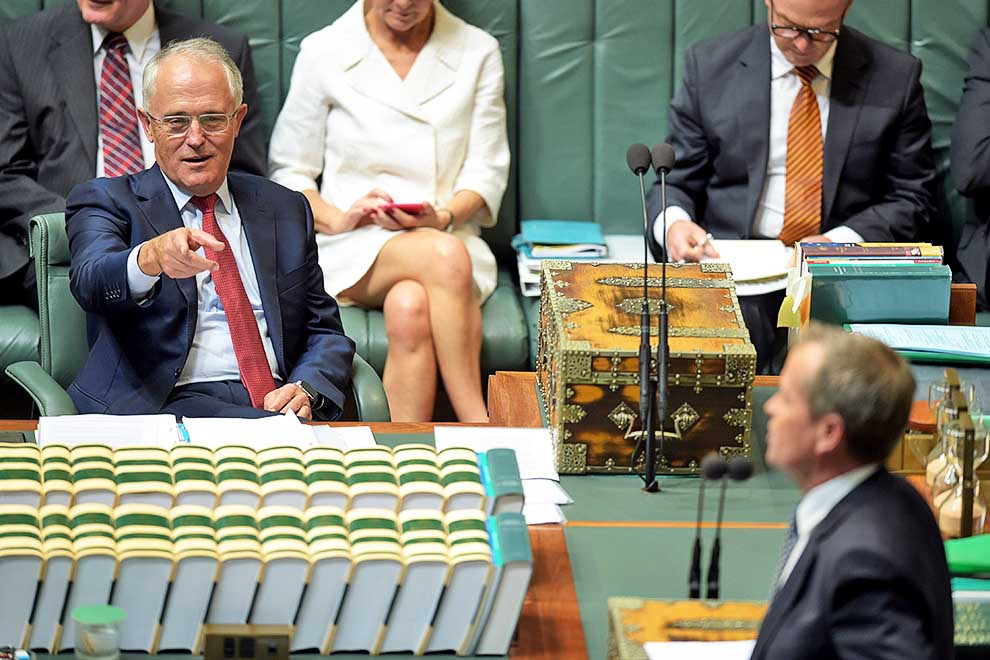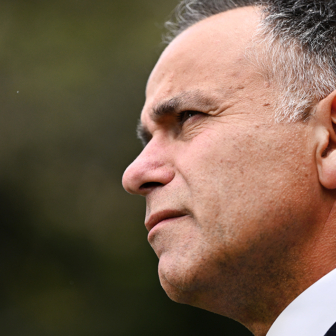What to make of today’s Newspoll, which has the parties level after preferences at 50 per cent each? It follows a closer-than-usual 52–48 Ipsos poll in Fairfax papers last week and a general narrowing since late last year.
Newspoll has already rippled around ABC radio and the rest of the media. Unfortunately for the government, parliament is sitting this week, and each element of politics will be interpreted through the prism of Labor’s apparent surge and momentum. Everything Malcolm Turnbull and Scott Morrison said and did over the last fortnight will be reanalysed and found even more wanting. Bill Shorten will be depicted as a man of stature, conviction and wit.
Try as they might, politicians can’t ignore the political media’s obsessions. And all from a couple of imprecise measurements of people’s responses to a question based on the crazy hypothetical that an election was held last weekend. Australian politics is facile that way – and yes, the existence of this article indicates I’m part of the problem.
One unknown with all these polls, which won’t be revealed until the election, is the reliability of preference allocations based on flows at the last election, in 2013. That’s how the pollsters estimate their two-party-preferred numbers. The 2013 poll was characterised by three unusual things: the Palmer United Party, which seemed to come out of nowhere; a low vote for independents; and an overall independent preference flow that favoured Labor. The latter was primarily due to the results in Denison (from Andrew Wilkie) and Indi (from Cathy McGowan). And PUP has all but disappeared.
Pollsters allocate preferences party by party, and presumably independent preferences are distributed as a block. We don’t know the level of support for independents in these polls, as they are lumped with “others,” but it’s fair to assume it is larger than at the last election. And I doubt that all, or even most, of the people telling pollsters they’ll vote independent would preference Labor ahead of the Coalition.
Yes, it’s possible that the Labor Party could get 50 per cent of the two-party-preferred vote from primary support of only 35 per cent (as Newspoll shows), but if the Coalition receives 43 per cent primary support and the Greens only 12 (as in Newspoll) it’s very unlikely.
These considerations are worth a percentage point or two, at most. They only matter at around the 50–50 mark. Which is why they matter today.
The Queensland election, a little over a year ago, showed how preference assumptions can lead pollsters astray. Using flows at the previous contest, in 2012, they all understated Labor’s two-party-preferred support by 2 or 3 per cent. Going with preference behaviour at the 2009 election would have given numbers much closer to the mark.
Hindsight is a wonderful thing. And the relationship between primary and two-party-preferred support is more rubbery under optional preferential voting, which Queensland has, than full preferential, which is used federally. But applying the 2010 federal election preference flows to today’s Newspoll, rather than the 2013 ones, would produce a Coalition lead of 51–49 or 52–48.
In itself the difference is trivial, but it makes a huge impact on the political reporting, and that means Turnbull and the government are in for a rough fortnight. It might lead them to panic and do something stupid; when Tony Abbott began trying to generate opinion poll boosts it spelt the end.
Commentators will judge that Shorten’s wacky decision last week to release a policy to wind back negative gearing has been vindicated. (The policy wasn’t wacky, just the fact of its release before an election. The sainted Hawke and Keating would never have been so reckless.)
The good news for the government is that the polls might encourage Labor to paint even more big targets on itself for the election.
Coincidentally, a certain former prime minister also features in today’s Australian, with an opinion piece which, while not critical of the Turnbull government, is not particularly helpful either, containing yet another justification of his own record and raising expectations of defence spending in the budget.
The people most emboldened by this Newspoll will be that section of parliament and the population that former independent MP Tony Windsor has called “Abbott crazies.” I can hear the howls now. As luck would have it, there’s a full moon tonight. •





